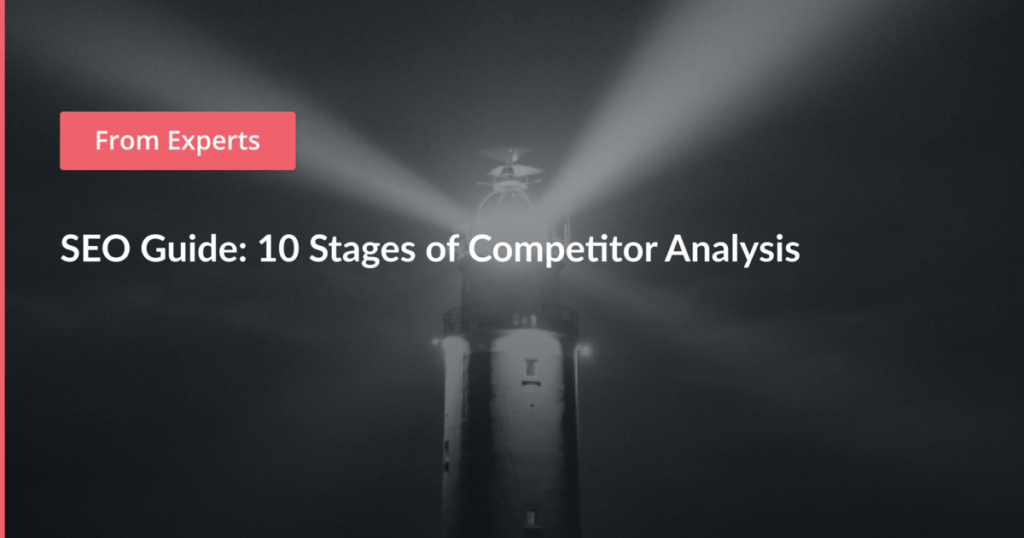Competitor analysis is an important stage of website promotion. It should be performed at the very beginning of a project to investigate the strengths and weaknesses of competitors. Competitor analysis will help you understand how you can overtake competitors in organic search engine results.
Stages of Competitor Analysis
Let’s take a look at each stage in more detail.
Step 1: Creating a list of direct competitors
To find competitors, search for several keywords important to your site and see which websites appear in the top 10 search results. For example, if you sell bicycles, you might try the keyword phrase ‘buy bicycle’:
Try using Netpeak Checker’s top 10 search results scraping tool to speed things up:
Websites that are boosted by Netpeak Checker’s organic output could potentially be your competitors.
You can also find your competitors in search results using popular online services:


Important! It’s crucial that you manually check the relevance of each competitor. For example, if you sell only mobile phones, then you should exclude large marketplaces that sell food, clothes, or other goods in addition to phones. These websites may have high positions for certain search queries (usually high-frequency queries) but they are not your direct competitors. They may cross paths with you in organic search, but they do not directly compete with you.
Step 2: Analyzing the structure of competitors’ sites
Analyzing the structure of competitor sites allows you to determine the types of pages that are on their sites that are not on yours. Creating similar pages on your website will expand its semantic core and increase your presence in search results.
You can get a list of pages using Netpeak Spider:
You can also get a list of website pages by analyzing the XML sitemap. This can be done in Netpeak Spider too:
The entire structure can be presented conveniently in a Google Sheet:
Step 3: Content Analysis
Content is the reason a user visits a website. The more relevant content is published on a resource, the more targeted traffic it will see. Content comes in many forms, including:
When analyzing the content on competitors’ websites, you should take note of:
You can use Serpstat’s online tools to gather the most effective pages of your competitor’s website:
If you need to check the popularity of a list of pages, you can use Netpeak Checker and the Serpstat API:
Step 4: Analyzing the keyword list
The semantic core of a website is the set of all search queries for which the website is displayed in organic search results. As a result of competitor analysis, you can get a list of search queries that bring traffic to competitors but not to you. This can be done using Serpstat’s online tool:
The search queries you find can be used to create new content and optimize what you already have.
Step 5: Analyzing loading speeds of competitors’ websites
Search engines use the loading speed of a website’s pages as a metric when evaluating the quality of the site. If your website loads faster than your competitors’ sites, you’re in good shape. If not, you should optimize your website’s speed. You can measure the loading speed of a website using the free online service Google Pagespeed Insight. Simply enter a URL and press Enter:
You can only check one website page at a time. If you need to check the download speed of a whole list of pages, you can use Netpeak Checker with Google Pagespeed API integration:
During the analysis, you should pay special attention to the following Page Speed Insight indicators:
Step 6: Checking websites for usability on mobile devices
As the number of users with mobile devices increases, search engines pay more and more attention to a website’s ease of use on a smartphone. If competitors’ websites are convenient to view on a mobile phone but yours isn’t, this is a serious drawback for your site that should be addressed as quickly as possible.
You can check competitor websites for mobile optimization using the Mobile Friendly service:
Step 7: Analyzing internal linking blocks
Internal links lead from one page of a website to another. When internal links are present, resources are scanned by search bots and search weight is distributed among pages. It’s worth linking one page to other relevant pages that could help visitors or that contain similar content and complement the page.
You should compare which internal link blocks competitors have and compare them with your website’s blocks. For example, if your competitors have a block with a list of new blog posts, and your website does not, then it’s very likely that search bots will find, scan, and index their posts faster than yours. As a result, articles written by competitors will be the first to appear in search results and will rank higher than yours. The same goes for product pages and other content.
The most popular internal linking blocks include:
Some sample link blocks on eBay:
You can find all competitors’ internal links using Netpeak Spider:
Step 8: Analyzing the profile of backlinks
External links are an important factor that affect the promotion of a website in search results. The more authoritative sources link to your website, the more it will attract the attention of search engines.
When analyzing the link profile of competitors’ websites, you should pay attention to the following indicators:
When analyzing the link profile of your competitors, you can find authoritative resources where you should also post links to your website.
Links to competitors can be found using online services:

You can check the number of donors and links of direct competitors in bulk using Netpeak Checker along with Ahrefs and Serpstat APIs:
Step 9: Enhanced structured data audit
Advanced data micro-markup divides site page code by data types. With it, you can indicate details from a product page, such as the description, price, availability, and rating. For a planned event, you can specify the date, venue, program, ticket price, etc. Each type of content has its own dataset.
With micro-markup, you can display an advanced search snippet that contains additional information about a page, making it more compelling to users and increasing CTR. Here’s an example of an extended snippet formed using the Product, AggregateOffer, and AggregateRating structured data:
You can check the types of structured data that are on competitors’ websites using Netpeak Spider:
Step 10: Usability analysis
Usability is the convenience of a website for users. This is a fairly broad metric that can look different for different types of websites, content, and target audience segments, but it has a direct impact on the user experience. The more user-friendly a website is, the more search engines will value it.
When analyzing the usability of competitors, you should pay attention to the following:
If you manage to make your website more user-friendly than your competitors’, you have every chance of overtaking them in search results.
Competitor analysis takes a lot of time and resources, but it allows you to gather all the necessary information that will help you overtake your competitors in search results. The analysis should be carried out in sequential stages, and it’s best to compare all the data you gather in organized tables. This will allow you to more clearly see the strengths and weaknesses of your competitors, and to determine the most effective way of developing your project.
This content was originally published here.




